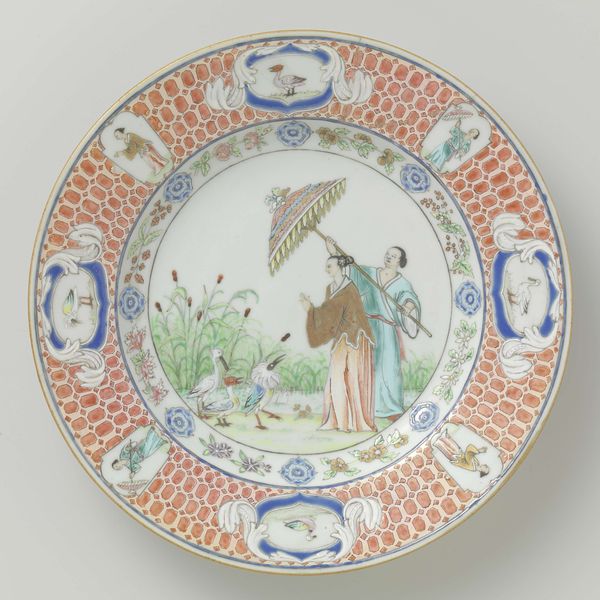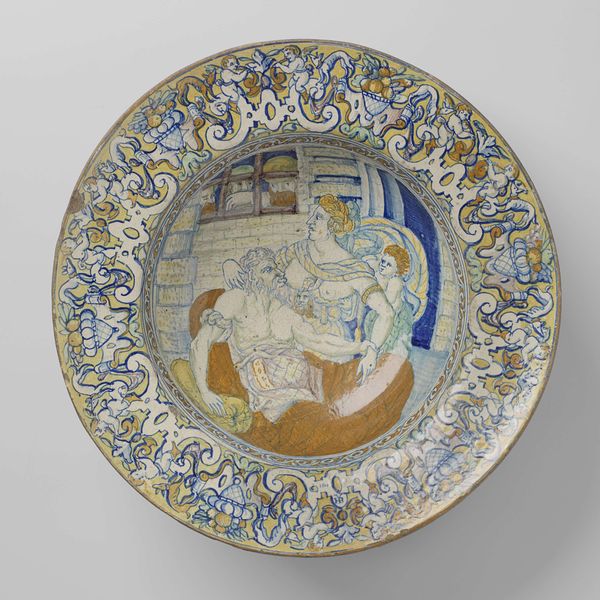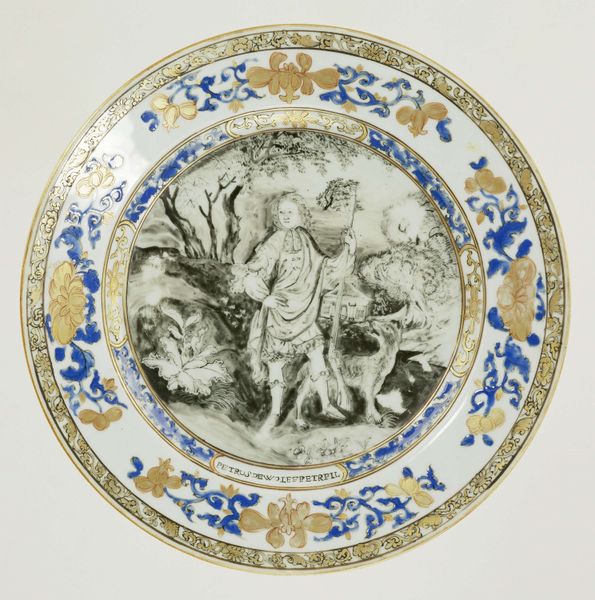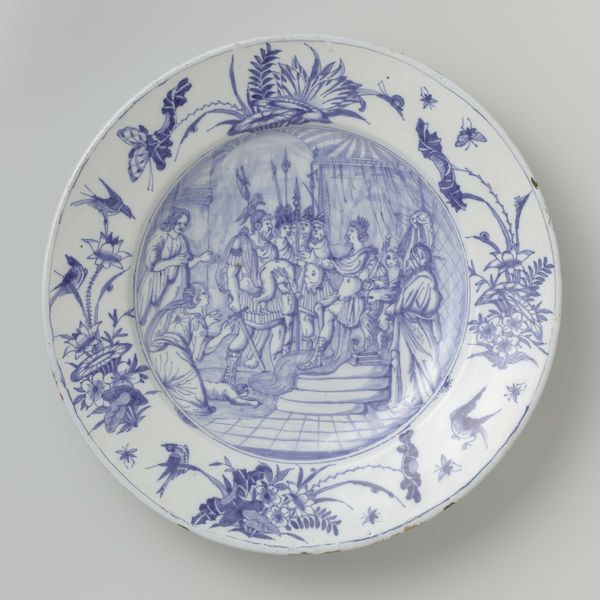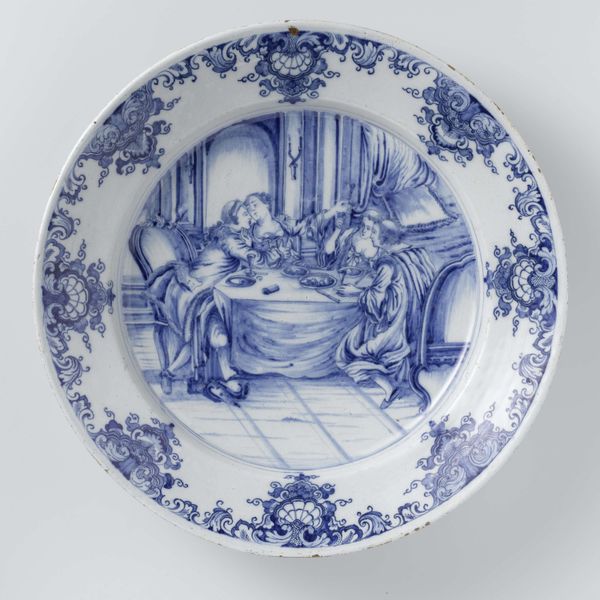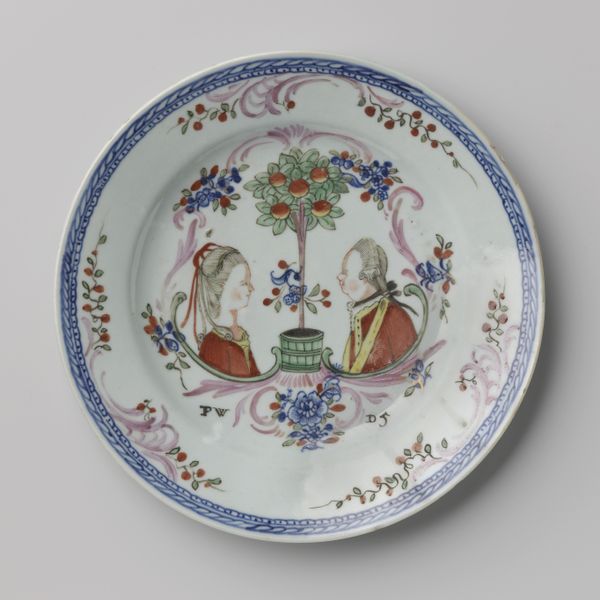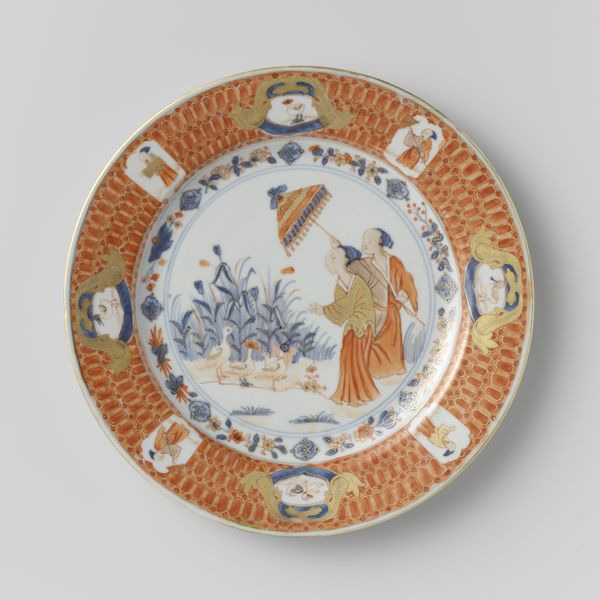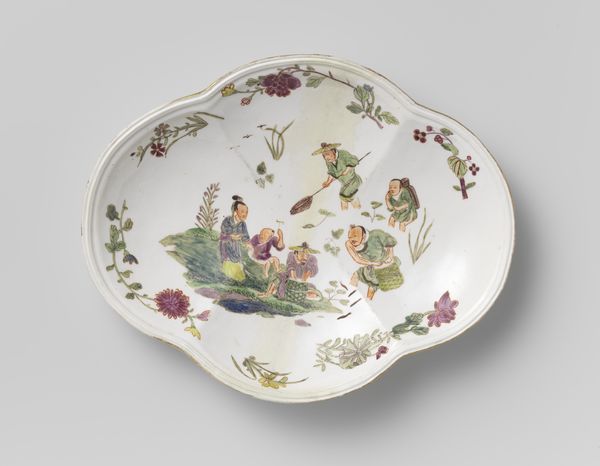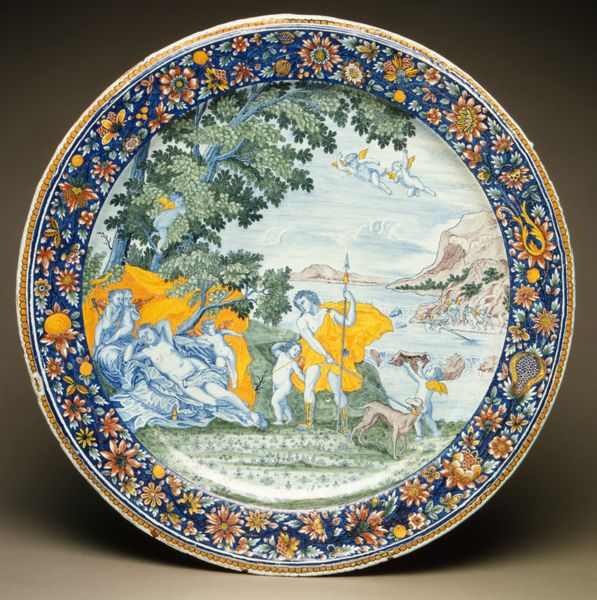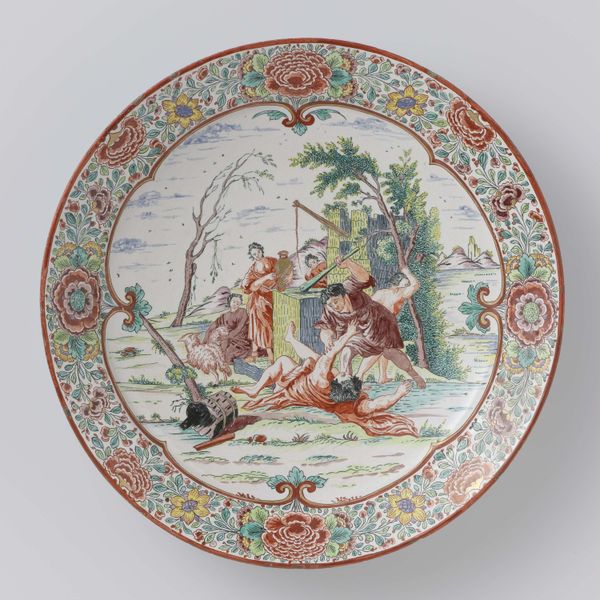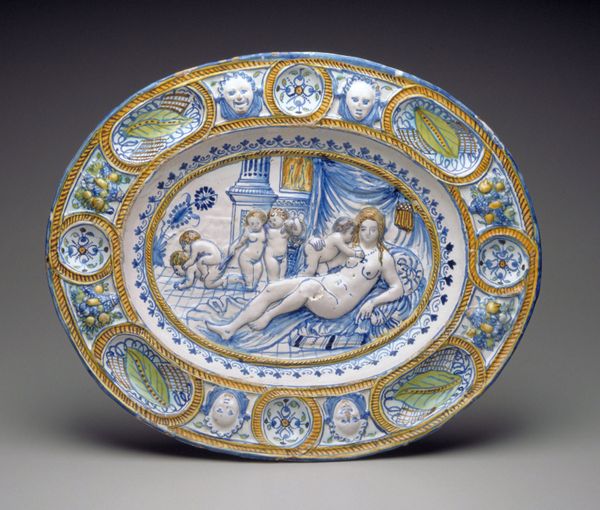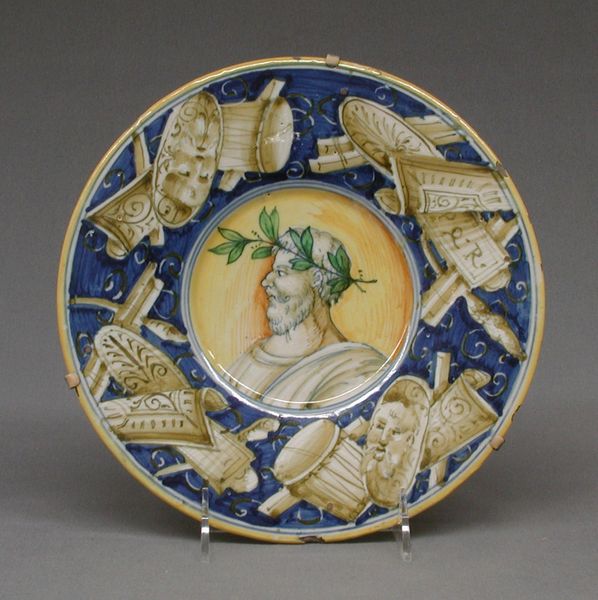
Dish with the Calumny of Apelles and the arms of the Ridolfi family c. 1520 - 1525
0:00
0:00
ceramic
#
decorative element
#
ceramic
#
figuration
#
ceramic
#
history-painting
#
decorative-art
#
italian-renaissance
#
decorative art
Dimensions: height 6.6 cm, diameter 53.4 cm
Copyright: Rijks Museum: Open Domain
This tin-glazed earthenware dish depicting 'The Calumny of Apelles' was painted around 1530 by Nicola da Urbino. The scene, teeming with symbolic figures, illustrates the dangers of false accusation, as described by the ancient painter Apelles. Note the figure of Calumny, or slander, holding a blazing torch, guiding the innocent to a king with donkey ears, representing ignorance. The motif of the torch, a symbol of knowledge and truth, here ironically illuminates the path of falsehood, distorting perception. We see similar inversions in illuminated manuscripts. The kneeling figure represents innocence, reminiscent of classical sculptures of supplication, which has been revived throughout the Renaissance and later, each time infused with cultural anxiety. It's a primal gesture of vulnerability that evokes a deeply rooted emotional response. Symbols, such as the torch, transcend their original context, reappearing across cultures and epochs. They adapt and morph according to the cultural landscape and the collective consciousness of those who behold them, reflecting the cyclical nature of history itself.
Comments
rijksmuseum about 2 years ago
⋮
This scene is based on a description of a famous, lost painting by the ancient Greek Apelles. A naked youth – Innocence – is dragged before a stupid judge (with ass’s ears!), whose view is blocked by Ignorance holding a white cloth. Slander (Calumny), with a torch, accuses the innocent youth. Naked Truth stands behind him, but nobody listens to her
Join the conversation
Join millions of artists and users on Artera today and experience the ultimate creative platform.
